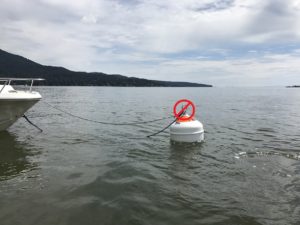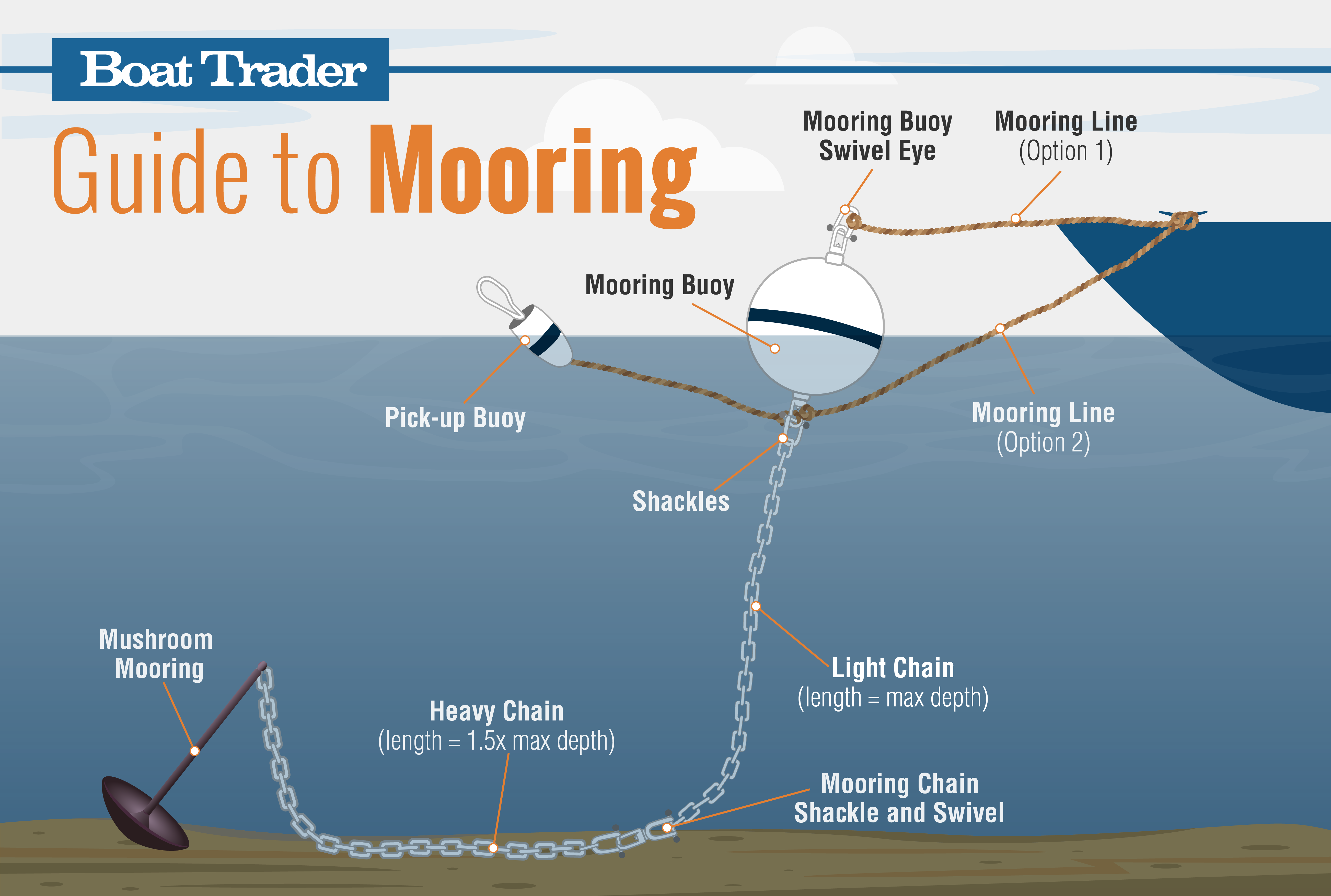
Mooring act in unison to hold the vessel just off the quay. Baltic mooring is a combination mooring of a vessel alongside the berth which employs a stern mooring shackled to the offshore anchor cable in the region of the ganger length.

Cleat both ends of your bow line to the bow of your boat.
How to tie off to a mooring buoy. How To Tie Your Boat To A Mooring Buoy Quick Easy Way - YouTube. When youre tying off to a mooring buoy. Slip your dock line through the loop on the mooring buoy rope.
Tie the other end to a second cleat on your boat. You dont need to worry about tying knots with the mooring buoy rope that probably has barnacles and grass on it. In this video Ill show you how to easily tie onto a mooring ball otherwise known as a mooring buoy how to release the lines and leave a mooring ball and.
How to Properly Tie Up Your Boat to a Mooring Buoy - YouTube. Tying Up to a Mooring Ball for a Storm. To tie up to a mooring ball for a squall or tropical system use three-strand lines with spliced eyes in one end making a loop by tying a knot weakens the line far more than using a line with a spliced eye.
Pass the eye through the pennant then the free end of the line through the eye. Ill attach the pendant end to the mooring ring with a good shackle and leave a small pickup buoy on the other end of the rope. On arrival Ill simple pickup the rope run it through my bow roller and tie off securely to the cleat.
Ill also tie off the cleat so the warp cant come lose. Whilst the kettle is boiling I then run a line from the stern to the bow block and back to the stern again making sure the line is on the outside off the stanchions. Tie the line onto the mooring buoy and pull the boat forward from the cockpit until I am on the mooring buoy.
Fasten the lines off to the bow cleats and enjoy a cup of tea. The main mooring buoy is often too heavy to lift as it has to be big enough to support the heavy riser chain. There is normally a ring on the top of the buoy to moor to and to make picking the mooring up easier there is often a pick up line attached this may have a small buoy.
The pennant ties the boat to the mooring. Choose the largest diameter that reasonably fits through the bow chocks and around the mooring bit or cleat for best bet. Easy splicing 3 strand line is most common made from nylon for shock absorbing stretch.
Equivalent diameter double braid polyester offers more strength than 3 strand. Tie a knot in the middle of your 6ft piece of rope and slide three floats on each end. Tie the ends to the plastic pipe by stringing it through the two holes.
This allows you to tie the knot from the outside of the pipe so no knots are inside to hang up. Make sure the rope is. Mooring a boat is usually straightforward but there are rules youll need to remember.
Our handy video makes it easy to know where when and how to moor. I think the best way to tie off to a mooring line is to run a dock line through it and cleat off each end at the bow. Or you could tie off one end of the dock line run the other end through the mooring line loop and then cleat that end off on the bow.
Releasing from the mooring is as simple as uncleating the dockline and pulling it in from the other end. Some boatyards have moorings with 34 inch pendant lines attached to them which is probably too large to fit over your bow cleat. In this case you tie your pendant line to the 34 eye splice with an anchor bend and add a float to you pendant line.
Some people like to use and eye splice for the bow cleat. Tying to the top ring puts stress on the buoys internals and will result in more wear and tear over time. In order to keep your mooring buoy in top shape we recommend tying a pennant line directly to the anchor chain that is attached to the swivel eye on the underside of the mooring buoy.
Our Transport Canada compliant mooring buoys can be found here. One of the best aspects of boating in our opinion is the wide variety of types of boats people and ways of getting things done out. Put your vessel in neutral to avoid entanglement.
Run your boats bow line through the loop of the yellow pick-up line. Cleat both ends of your bow line to the bow of your boat. Never tie the yellow pick-up line directly to your boat as it puts undue stress on the mooring anchor.
How to hook up to one. Slightly off center of the buoy This will enable you to see it for longer. The crew should be on the other side of the boat and only step forwards at the last moment.
Best approach is to tie a round turn and two half hitches to the ring on the buoy. Mooring Hitch Knot Tying Instructions. Make a turn around a post and then form a loop with the free end exiting the loop on the inside leave longer free end than illustrated.
Grasp the standing line and pull a section through your loop. To avoid grounding use caution when approaching and while tied to a buoy. Larger than average vessels must check depths so that contact with the bottom is avoided.
To secure your boat to a mooring buoy run your line through the loop of the floating pick-up line and cleat both ends to the bow of your boat. Occasionally I will tie up to a mooring buoy at a state park for an overnight stay or two. Typically a dock line is run from a Port bow cleat then through the mooring buoy eye and back to the Starboard bow cleat with some slack in the line.
The problem with this tie up is that the mooring. Mooring act in unison to hold the vessel just off the quay. Baltic mooring is a combination mooring of a vessel alongside the berth which employs a stern mooring shackled to the offshore anchor cable in the region of the ganger length.
When approaching the berth the offshore anchor is deployed and the weight on the cable and the stern. First rig a line from bow cleat to stern cleat outside all the railings then reverse towards the buoy from down windtide. I made the initial approach bow-first then swung round and reversed the final metre.
Grab the mooring buoy and pass the bow line through the top ring or mooring warp. The mooring buoy concept is simple. Install a mooring buoy close to or over a site where boats traditionally anchor.
Instead of anchoring boat users tie off to the mooring and this lessens damage. Mooring buoys can also be used as an ongoing aid to coral reef conservation. They may be used to zone an area for a particular activity.